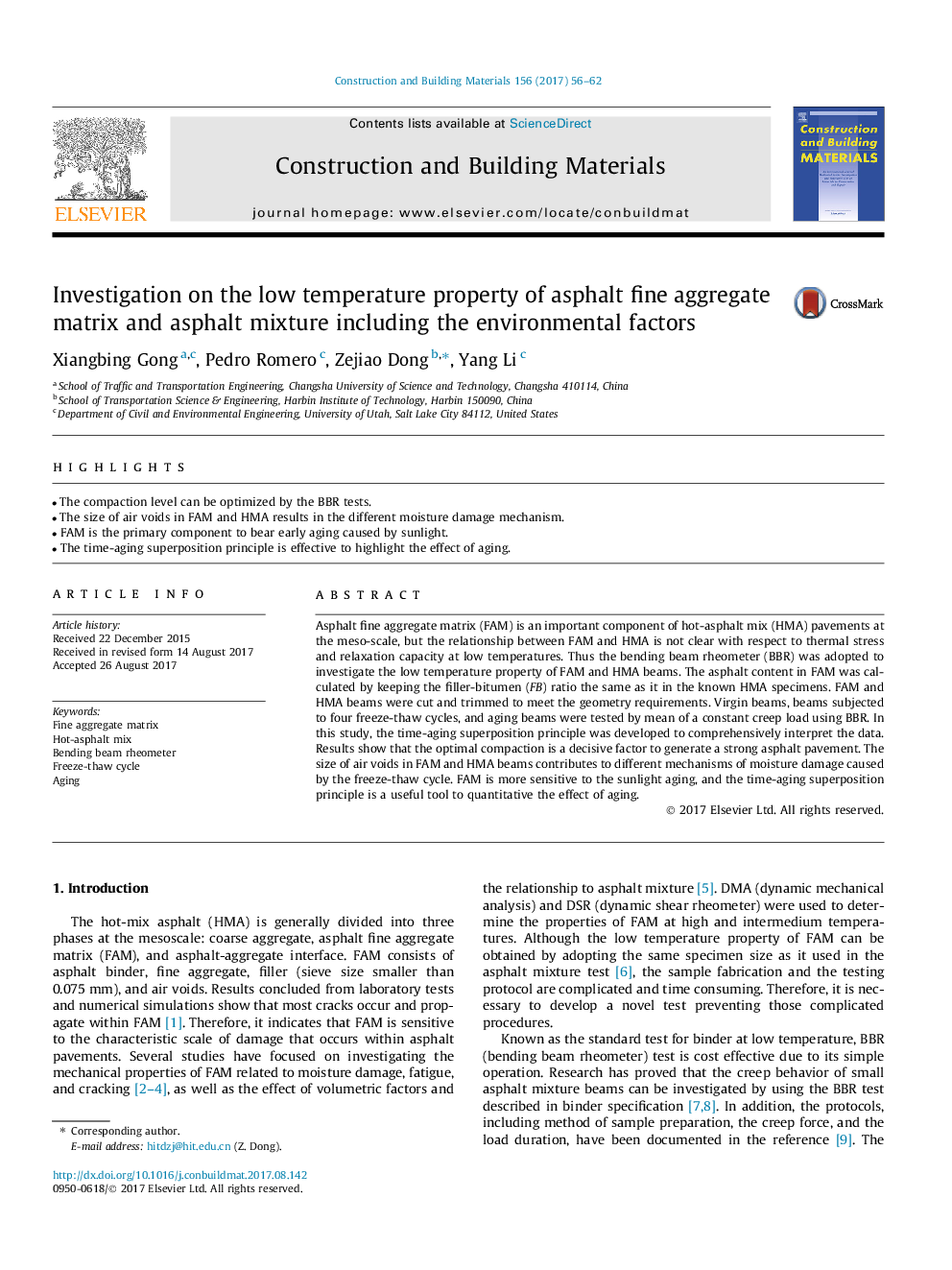| Article ID | Journal | Published Year | Pages | File Type |
|---|---|---|---|---|
| 4912646 | Construction and Building Materials | 2017 | 7 Pages |
Abstract
Asphalt fine aggregate matrix (FAM) is an important component of hot-asphalt mix (HMA) pavements at the meso-scale, but the relationship between FAM and HMA is not clear with respect to thermal stress and relaxation capacity at low temperatures. Thus the bending beam rheometer (BBR) was adopted to investigate the low temperature property of FAM and HMA beams. The asphalt content in FAM was calculated by keeping the filler-bitumen (FB) ratio the same as it in the known HMA specimens. FAM and HMA beams were cut and trimmed to meet the geometry requirements. Virgin beams, beams subjected to four freeze-thaw cycles, and aging beams were tested by mean of a constant creep load using BBR. In this study, the time-aging superposition principle was developed to comprehensively interpret the data. Results show that the optimal compaction is a decisive factor to generate a strong asphalt pavement. The size of air voids in FAM and HMA beams contributes to different mechanisms of moisture damage caused by the freeze-thaw cycle. FAM is more sensitive to the sunlight aging, and the time-aging superposition principle is a useful tool to quantitative the effect of aging.
Related Topics
Physical Sciences and Engineering
Engineering
Civil and Structural Engineering
Authors
Xiangbing Gong, Pedro Romero, Zejiao Dong, Yang Li,
